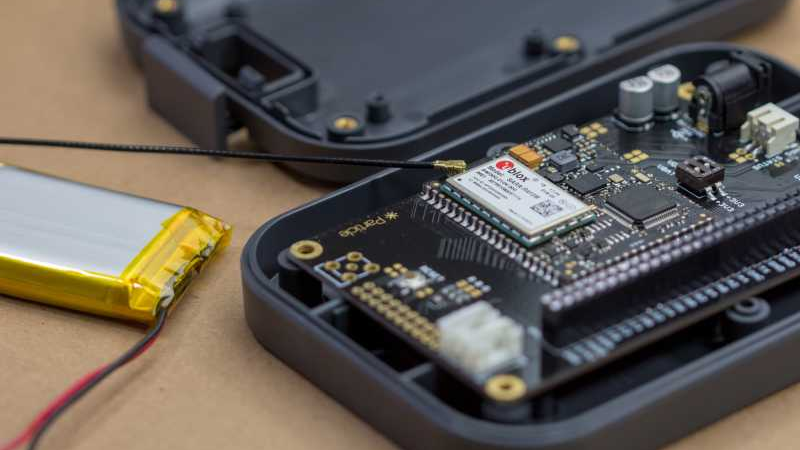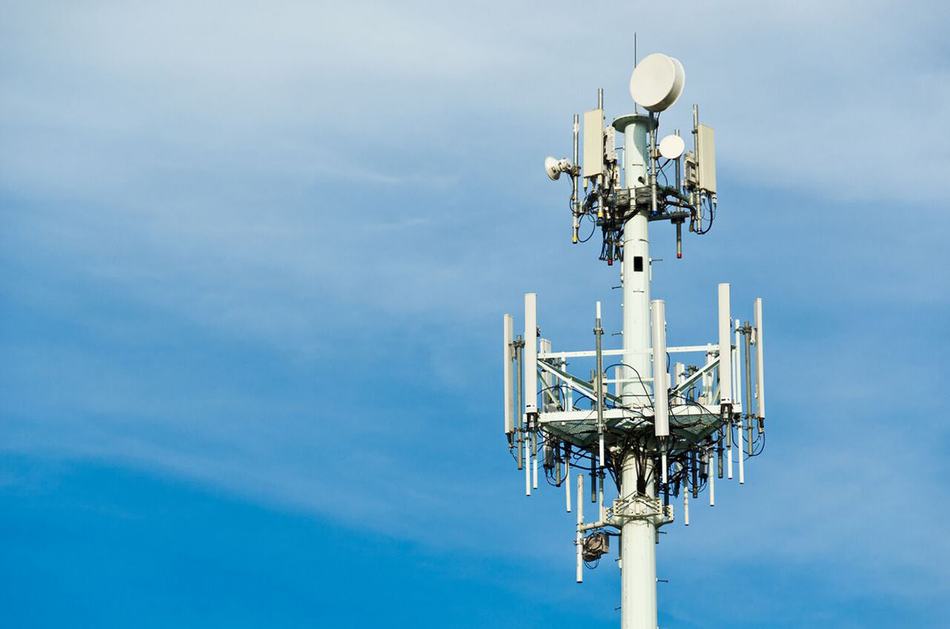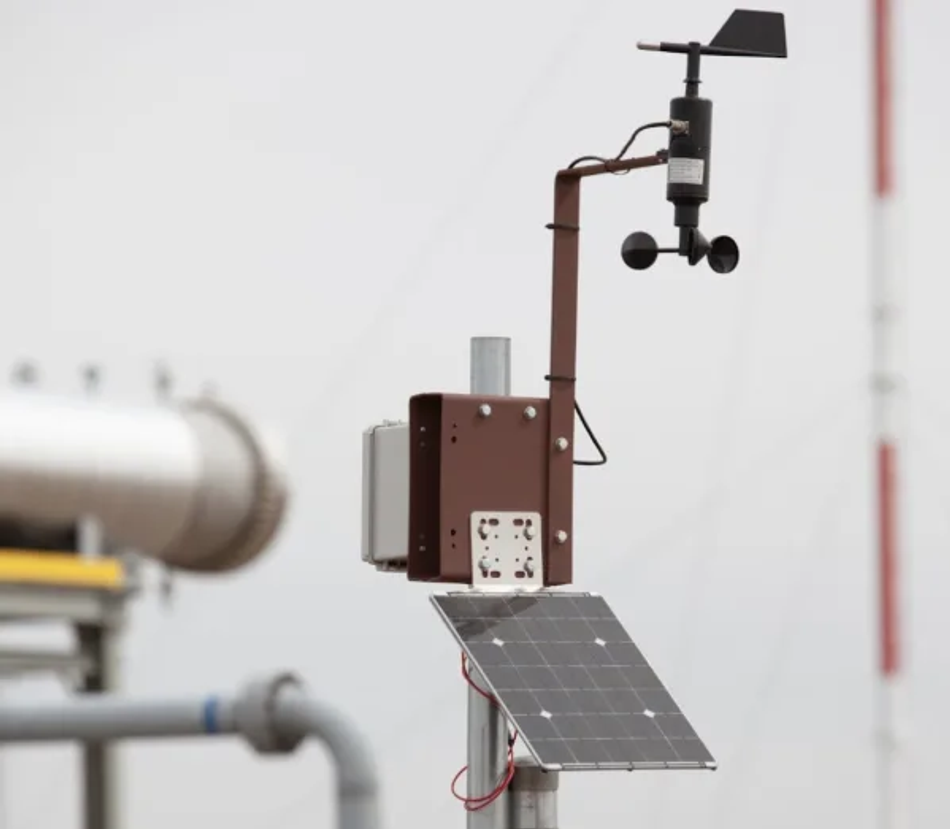Cellular VS. WiFi for IoT How to Choose the Right One: Foundations
Choosing Cellular or WiFi Article #1:Cellular and WiFi connectivity have their own distinct benefits for IoT. Learn about the strengths and weaknesses and application examples of each one.
This article was first published on
www.particle.ioCellular and WiFi are the two most popular connectivity methods for IoT technology. Though many early IoT projects relied on WiFi, cellular technology has grown in popularity as it became better equipped to handle more use cases. Against the backdrop of continuous innovations in the wireless industry, choosing the best radio access technology for your IoT project has become challenging. In this first half of a two-part article, we'll examine the key differences between cellular and WiFi, show example use cases for each one, and explain how you can choose the right technology for your project.
Cellular VS. WiFi for IoT - A quick comparison
There are several criteria you can use to compare cellular vs. WiFi, such as:
Cost
Reliability and security
Location detection
Coverage
Data throughput
Device provisioning
Let’s dig into the details of each one to understand how cellular and WiFi are meaningfully different (or in some cases, similar).
Cost
Cellular data plans are generally more costly than comparable WiFi plans on a per-byte basis. If your project requires recurring big data transfers, WiFi networks would be your best choice. However, when doing a cost comparison, you should factor in ongoing cost of maintaining your WiFi network as well as the cost of provisioning many devices across different WiFi networks that you as the IoT fleet operator may not control.
Cellular is generally more expensive on a per device basis than WiFi but you should also take into account the cost of maintaining and managing the WiFi network as a part of the per-device cost when comparing the two.
When comparing one-time hardware costs, cellular modems are more expensive than WiFi modems. That said, it’s important to understand how either type of connectivity will influence the total cost of ownership of your IoT deployment.
Reliability and Security
Part of what you’re paying for in your cellular plans is world-class security and reliability. While it is possible to create comparable security and reliability over WiFi, you're relying on WiFi network owners & building management teams to do that work on an ongoing basis. In contrast, cellular security is backed by knowledgeable cybersecurity specialists.
When you're buying cellular, part of the costs is for the expert network management from the provider. However, when buying WiFi, network management is managed by yourself. Your own WiFi network generally provides a less stable network than the cellular solution does.
Location Detection
There is not much difference between getting accurate location information via WiFi and cellular. However, in some circumstances where your device is out of range of WiFi, cellular networks will perform better, being able to mark your devices’ approximate location. In either case, getting location from WiFi SSIDs or cellular towers requires integrations with 3rd party providers which give location estimates based on a geographical database of network IDs.
Coverage
WiFi is a great access technology when your deployed environment has WiFi coverage. This tends to be the case for devices deployed in homes or buildings, or in places where cellular networks are known to not have coverage such as oil rigs and mines. If you’re planning to track things that are mobile, such as vehicles, or deployed in remote locations, then cellular is better.
Although this is covered below, it bears repeating that cellular is often a great choice for stationary assets in urban and office environments because of the relative ease of onboarding a device to the cellular network compared to a WiFi network where you have to know passwords and get through network-specific security measures.
Data throughput
Traditionally, WiFi performs faster than cellular networks. But with the development of 4G and 5G, the data throughput of cellular networks can be relatively on par with WiFi. Both cellular and WiFi networks are sufficient for most IoT projects.
Device Provisioning & Setup
It’s much easier to deploy fleets of cellular devices when compared to WiFi. Installing a cellular fleet can be as simple as turning on the power to the device. Assuming that connected device has cellular coverage, it will automatically connect to the network.
In contrast, with a WiFi device you may need to first set up your network or otherwise manage access to that network with usernames & passwords for each device. This can be a deal breaker for many use cases where the WiFi network is heavily protected by the owner.
Benefits and drawbacks of cellular for IoT
Pros:
Cellular has more robust privacy and security with automatic encryption.
Cellular service has more comprehensive coverage with no set range since you don't need a router. This is important for remote assets like oil rigs.
Obstacles do not as easily block deeper coverage with cellular signals.
Often better for use cases that need low power consumption
Cons
Data plans can be expensive if your use case requires you to send large amounts of complex data.
Bundling SIM cards from different providers can force you to get your entire IoT deployment recertified. Be sure to understand what goes into FCC certifications for IoT.
Devices can lose coverage in locations where cellular service is spotty.
Not always accurate when determining device location.
Benefits and drawbacks of WiFi for IoT
Pros:
Private WiFi connections are secure and enable fast access to connecting multiple devices.
Suitable for data-heavy transfers since there is no cost limitation on the amount of data transferred. A note here is that with the development of 5G, the advantages of WiFi relative to cellular might be eroded.
Cons:
Public WiFi may not be secure.
Reliant on end user's WiFi. If they change their password or get disconnected, the device may go down.
The devices need to have access to a WiFi router. The limited range can be a barrier for remote assets.
Too many devices connecting to one router may degrade the signal.
WiFi configuration may require technical expertise.
Best use cases for Cellular
The use cases for cellular IoT are extensive. In this section, we’ll share a few examples of where it’s effective.
Deploying Continuous Emissions Monitoring
Qube was an early mover in response to emissions-cutting pledges that gained widespread attention following 2021’s COP26 conference. Qube offers continuous emissions monitoring solutions by combining proprietary algorithms that can detect greenhouse gas emissions and pinpoint their type and location with IoT sensors that provide a continuous data feed.
Qube was looking for an affordable platform that could scale across the world while offering low power consumption. The team knew that cellular connectivity would be the right choice as many of their devices would be deployed in remote locations where WiFi wouldn’t be available.
Qube built its solution using IoT platform, Particle’s, EtherSIM solution, a SIM card powered by over 350 carriers worldwide. No matter where Qube’s devices are deployed, they will automatically connect to the best cellular network available.
“We rely on Particle’s devices to get continuous data, which is streamed to our servers on a minute-by-minute or second-by-second basis. We then use that continuous data in our machine learning algorithms to infer what is actually happening in terms of leak quantity, leak size, and leak type,” Cube COO Eric Wen said.
Managing Remote Industrial Assets
While the emissions monitoring sector is benefiting from global connectivity, those with industrial IoT applications are also finding key benefits from cellular connectivity.
FieldIntell, a cloud platform serving customers mainly in oil & gas, agriculture, and mining, is also seeing a promising future of stable global-wise cellular connection.
Particle provides global connectivity with hundreds of carriers worldwide, which saves FieldIntell’s time spent on negotiating with carriers across multiple countries. FieldIntell’s customers push Over-the-Air updates and remotely control complex assets with connectivity that’s integrated with both the devices and cloud.
Best use cases of WiFi for IoT
Cellular isn't always the best everywhere. If your devices mostly live in a facility with cement and metal all around it, signals from a cell tower aren't going to reach them. There are other use cases, like oil rigs in the middle of the ocean, where there's no cellular coverage. Under those circumstances, WiFi can be a superior choice. For example, remote oil rigs or mining operations generally have a satellite uplink and a local WiFi network. The same applies to industries like mining, which are usually based in remote locations where cellular networks haven't invested in putting a cellular tower.
Combatting the COVID-19 pandemic
Aura Air built a data-driven air quality monitoring system with a WiFi-connected IoT product that was designed to disinfect 99.9% of viruses, bacteria, mold, and VOCs from indoor air. Aura Air’s devices can help combat the threat of COVID-19. With the help of IoT technology, the product can detect influenza and COVID-19 viruses and sterilize the air to reduce spread. By harnessing Particle’s WiFi module P1 SKU, the Aura Air devices can be connected through local WiFi networks of 2.4 GHz that do not have a firewall enabled. Users can view and update real-time air quality data through their phones or central dashboards.
Conclusion
As the IoT and the wireless industry continue to innovate, selecting the right radio access technology for your IoT project is increasingly challenging. However, by understanding the pros and cons of each technology and examining similar use cases the decision can become clearer. In the second half of this article, we’ll dive deeper into the strengths and weaknesses of each one and how you can determine the best choice for your IoT deployment.
About the sponsor: Particle
Particle provides an integrated IoT Platform-as-a-Service that helps businesses connect, manage, and deploy software applications to connected devices, from edge to cloud and back. Over 240k developers, and 160+ Enterprise customers are building on Particle, from fast-growing startups to Fortune 100 companies.
Our expertise goes beyond world-class technology, enabling next-generation business intelligence, insights, and expert customer support to make sure IoT projects succeed. So you can build the business of tomorrow, today.




